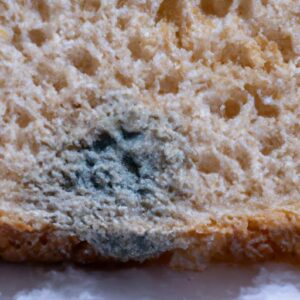When we crack open an egg and subject it to heat, a marvelous transformation takes place. But have you ever wondered whether cooking an egg is a chemical change? Let’s delve into the science behind this culinary phenomenon and explore the importance of understanding the chemical changes that occur during the cooking process.
Introduction to Cooking an Egg
Cooking an egg is a process that not only alters its physical state but also involves a series of chemical reactions. By subjecting an egg to heat, we initiate a fascinating journey where proteins unfold, molecules rearrange, and a runny liquid turns into a solid delicacy. Understanding the science behind this transformation can elevate our cooking skills and help us appreciate the wonders of chemistry in our kitchens.
Importance of Understanding the Chemical Changes Involved
Why should we bother unraveling the chemical changes that occur when we cook an egg? Well, it’s all about mastering the art of cooking and achieving the desired textures and flavors. When we comprehend the chemical reactions at play, we gain the power to control the outcome. Whether we prefer a soft-boiled egg with a gooey yolk or a perfectly firm hard-boiled egg, understanding the chemistry allows us to cook the egg to our exact preference.
Moreover, comprehending the chemical changes involved in cooking an egg expands our knowledge of food science. It enables us to appreciate the intricate processes that occur when heat interacts with proteins, leading to denaturation and coagulation. By understanding the underlying chemistry, we can apply this knowledge to other cooking techniques and enhance our culinary prowess.
In the next sections, we will explore the fascinating world of chemical changes, delve into the specific transformations that occur when we cook an egg, and understand the role of heat in this process. So, join me on this captivating journey as we uncover the secrets behind cooking an egg!
Understanding Chemical Changes
Chemical changes are at the very core of cooking an egg. Before we dig deeper into the specifics of cooking an egg, let’s first grasp the concept of chemical changes and distinguish them from physical changes.
Explanation of Chemical Changes
Chemical changes, also known as chemical reactions, involve the transformation of substances into new substances with different properties. During a chemical change, the atomic and molecular composition of the substances involved is altered, leading to the formation of new bonds and the release or absorption of energy.
When we cook an egg, chemical changes occur within its molecules. The heat applied causes the proteins in the egg to undergo denaturation and coagulation, resulting in a completely different texture and taste. This transformation is a prime example of a chemical change unfolding in our kitchen.
Differentiating Chemical Changes from Physical Changes
It is crucial to understand the distinction between chemical changes and physical changes. While both involve a transformation in the state of matter, they differ in terms of the changes occurring at the molecular level.
Physical changes, such as melting or freezing, do not involve the alteration of the chemical makeup of a substance. The molecular structure remains intact, and the change is reversible. On the other hand, chemical changes result in the formation of new substances with different chemical properties, and these changes are usually irreversible.
When we cook an egg, it goes through a chemical change rather than just a physical change. The heat causes the proteins in the egg to unfold and reorganize, leading to the solidification of the once liquid contents. This irreversible alteration in the egg’s molecular structure is a telltale sign of a chemical change taking place.
Now that we have a solid understanding of chemical changes and their distinction from physical changes, let’s dive deeper into the specific chemical changes occurring when we cook an egg.
Chemical Changes in Cooking an Egg
Description of the Chemical Changes Occurring During the Cooking Process
When we apply heat to an egg, a multitude of chemical changes take place within its humble shell. The raw egg, with its translucent whites and jiggly yolk, undergoes a remarkable transformation to become a solid and appetizing delight. This metamorphosis is driven by various chemical reactions that alter the molecular structure of the egg’s proteins.
Heat-Induced Protein Denaturation
One of the key chemical changes that occur during the cooking of an egg is protein denaturation. Proteins, the building blocks of living organisms, have a complex three-dimensional structure that determines their function. However, when heat is applied to an egg, the energy disrupts the weak bonds and forces the protein molecules to unfold and lose their original shape.
As the proteins denature, their structure becomes looser and more extended. This unfolding exposes previously hidden amino acids, resulting in a change in texture and appearance. The once clear and viscous egg whites transform into a solid, opaque mass due to the denaturation of proteins like albumin.
Coagulation of Egg Proteins
Alongside protein denaturation, another significant chemical change that occurs during the cooking of an egg is the coagulation of proteins. Coagulation is the process by which proteins form a solid, three-dimensional network, resulting in the solidification of the egg.
When heat is applied, the denatured proteins interact with each other and form bonds. These bonds create a mesh-like structure, trapping water and other components within the egg. The coagulation of proteins is responsible for the firmness and stability of the cooked egg, transforming the once runny yolk into a solid golden center.
In essence, the combination of protein denaturation and coagulation brings about the remarkable chemical changes that turn a raw egg into a cooked delight. Understanding these transformations allows us to appreciate the delicate balance between heat and proteins, and ultimately, cook the perfect egg that tantalizes our taste buds.
The Role of Heat in Cooking
Elaboration on the Significance of Heat in Chemical Changes
When it comes to cooking an egg, heat plays a crucial role in driving the chemical changes that transform its texture and taste. Heat acts as the catalyst that kickstarts a series of reactions within the egg, transforming it from a raw liquid to a solid delight. But why is heat so important in these chemical transformations?
Heat provides the energy required to break the weak bonds that hold the egg’s proteins together. As the temperature rises, these proteins gain enough energy to vibrate and move more vigorously. This increased movement leads to the denaturation of proteins, causing their three-dimensional structure to unravel. Consequently, the once transparent egg white turns from a liquid to a solid, and the runny yolk begins to solidify.
How Heat Affects the Molecular Structure of an Egg
As heat is applied to an egg, its molecular structure undergoes significant changes. Proteins, which are the building blocks of eggs, are composed of long chains of amino acids folded into intricate shapes. The application of heat causes these protein chains to unfold and lose their original structure. This unfolding is known as denaturation.
During denaturation, the hydrogen bonds that hold the protein chains together break, causing the proteins to lose their shape and become more exposed. The unraveled proteins then form new bonds with neighboring protein chains, leading to the coagulation of the egg’s proteins. This coagulation is what gives the egg its solid texture.
Impact of Temperature on the Outcome of Cooking an Egg
The temperature at which an egg is cooked has a significant impact on its final outcome. Lower temperatures result in a softer, more runny texture, while higher temperatures lead to a firmer, solid texture. This is because the heat applied affects the speed at which denaturation and coagulation occur.
At lower temperatures, the proteins denature and coagulate at a slower rate, resulting in a softer egg with a runny yolk. Conversely, higher temperatures accelerate the denaturation and coagulation processes, leading to a firmer egg with a fully cooked yolk. Understanding the impact of temperature allows us to tailor our cooking methods and achieve the desired consistency and texture in our eggs.
Now that we have explored the role of heat in cooking an egg and how it affects the molecular structure of the egg, let’s move on to comparing cooking an egg to other chemical changes in the next section.
Conclusion
In conclusion, cooking an egg is undoubtedly a chemical change that involves fascinating transformations. By subjecting an egg to heat, we witness the denaturation and coagulation of proteins, resulting in a remarkable transition from a liquid to a solid state. Understanding the chemical changes that occur during cooking not only allows us to control the outcome and achieve our desired textures and flavors but also deepens our appreciation for the science behind our culinary endeavors.
Through the comparison of cooking an egg to other familiar chemical changes, we can draw parallels and identify unique aspects of this process. While cooking an egg shares similarities with other cooking processes, such as the browning of meat or the caramelization of sugar, it possesses its own distinct characteristics. The delicate balance of protein denaturation and coagulation, along with the precise temperature control required, sets cooking an egg apart from other culinary transformations.
By unraveling the science behind cooking an egg and recognizing its chemical nature, we gain valuable insights into the wider realm of food science. This knowledge empowers us to experiment, innovate, and elevate our cooking skills. So, the next time you crack open an egg and embark on the culinary adventure of cooking, remember the chemical changes that lie beneath the surface, and savor the wonders of chemistry unfolding in your kitchen.
Now that we have explored the chemical changes involved in cooking an egg and the significance of understanding them, you are equipped with the knowledge to take your egg-cooking skills to new heights. Embrace the science behind the sizzle, experiment with different cooking methods, and let your taste buds be your guide. Happy cooking!


